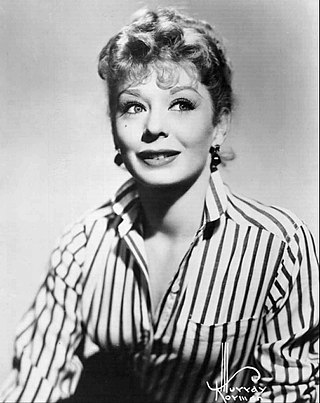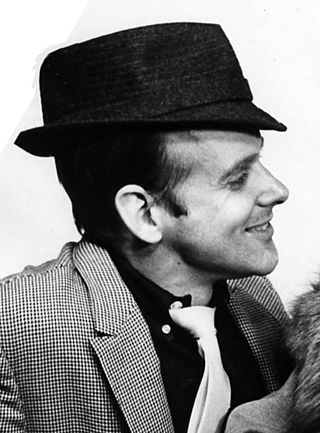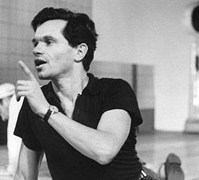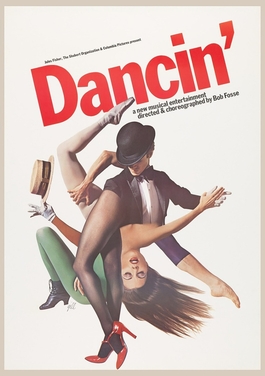Jazz dance is a performance dance and style that arose in the United States in the early 20th century. Jazz dance may allude to vernacular jazz, Broadway or dramatic jazz. The two types expand on African American vernacular styles of dance that arose with jazz music. Vernacular jazz dance incorporates ragtime moves, Charleston, Lindy hop and mambo. Popular vernacular jazz dance performers include The Whitman Sisters, Florence Mills, Ethel Waters, Al Minns and Leon James, Frankie Manning, Norma Miller, Dawn Hampton, and Katherine Dunham. Dramatic jazz dance performed on the show stage was promoted by Jack Cole, Bob Fosse, Eugene Louis Faccuito, and Gus Giordano.

Gwyneth Evelyn "Gwen" Verdon was an American actress and dancer. She won four Tony Awards for her musical comedy performances, and she served as an uncredited choreographer's assistant and specialty dance coach for theater and film. Verdon was a critically acclaimed performer on Broadway in the 1950s, 1960s, and 1970s, having originated many roles in musicals, including Lola in Damn Yankees, the title character in Sweet Charity, and Roxie Hart in Chicago.

Robert Louis Fosse was an American choreographer, dancer, and film and stage director. Known for his work on stage and screen, he is arguably the most influential figure in the field of jazz dance in the twentieth century. He received numerous accolades including an Academy Award, a BAFTA Award, three Primetime Emmy Awards, and 9 Tony Awards.

Bye Bye Birdie is a stage musical with music by Charles Strouse and lyrics by Lee Adams, based upon a book by Michael Stewart.

Michael Kidd was an American film and stage choreographer, dancer and actor, whose career spanned five decades, and who staged some of the leading Broadway and film musicals of the 1940s and 1950s. Kidd, strongly influenced by Charlie Chaplin and Léonide Massine, was an innovator in what came to be known as the "integrated musical", in which dance movements are integral to the plot.

Jerome Robbins was an American dancer, choreographer, film director, theatre director and producer who worked in classical ballet, on stage, film, and television.

Michael Bennett was an American musical theatre director, writer, choreographer, and dancer. He won seven Tony Awards for his choreography and direction of Broadway shows and was nominated for an additional eleven.

Gower Carlyle Champion was an American actor, theatre director, choreographer, and dancer.
Peter Gennaro was an American dancer and choreographer.

Ann Reinking was an American dancer, actress, choreographer, and singer. She worked predominantly in musical theater, starring in Broadway productions such as Coco (1969), Over Here! (1974), Goodtime Charley (1975), Chicago (1977), Dancin' (1978), and Sweet Charity (1986).

Fosse is a three-act musical revue showcasing the choreography of Bob Fosse. The musical was conceived by Richard Maltby Jr., Chet Walker, and Ann Reinking.

Jack Cole was an American dancer, choreographer, and theatre director known as "the Father of Theatrical Jazz Dance" for his role in codifying African-American jazz dance styles, as influenced by the dance traditions of other cultures, for Broadway and Hollywood. Asked to describe his style he described it as "urban folk dance".

Chita Rivera: The Dancer's Life is a musical revue based on the life of Chita Rivera, with a book by Terrence McNally, original songs by Stephen Flaherty and Lynn Ahrens, and additional songs from various other composers' catalogs. It earned Rivera her ninth Tony Award nomination.
Wayne Louis Cilento is an American director, choreographer, actor and dancer. He is best known for originating the role of Mike in the Broadway show A Chorus Line, and later becoming one of Broadway's most prolific choreographers.

Dancin' is a musical revue created, directed, and choreographed by Bob Fosse and originally produced on Broadway in 1978. The plotless, dance-driven revue is a tribute to the art of dance, and the music is a collection of mostly American songs, many with a dance theme, from a wide variety of styles, from operetta to jazz to classical to marches to pop. The original production received seven 1978 Tony Award nominations, with Fosse winning for best choreography.
Graciela Daniele is an Argentine-American dancer, choreographer, and theatre director.
The American Choreography Awards was a ceremony and show that honored outstanding choreographers in the fields of feature film, television, music videos, and commercials. They were first known as the L.A. Dance Awards (1994–95), then as Bob Fosse Awards, and a.k.a. Fosse’s (1996–97), and eventually the American Choreography Awards (1998-'04). Each year in the fall, they were held at a different location in Los Angeles, California. These include places such as the Orpheum Theatre, El Capitan Theatre, Alex Theatre, Wilshire Ebell Theatre, The Hollywood Palace, The Museum of Flying, The Century Club, and Club Tatou.
The American Dance Machine was a theatrical dance company created by Lee Theodore, which played on Broadway at the Century Theatre, opening Jun 14, 1978 and in total running 199 performances. It was duplicated with a second cast for the American Dance Festival at Duke University in 1978. The show was a "Living Archive" of Broadway theatre dance; great theatre dances saved from oblivion. Films were made of the performances to preserve original Broadway choreography and can be found at the Lincoln Center Library of the Performing Arts in New York City. Broadway legend Gwen Verdon appeared a film version of the show in 1981 for Showtime. Choreographers included: Agnes De Mille, Jack Cole, Joe Layton, Michael Kidd, Ron Field, Bob Fosse, Onna White and Peter Gennaro. Featured dancers and guest artists included Janet Eilber, Carol Estey, Harold Cromer, Liza Gennaro, Patti Mariano, Nancy Chismar, Randy Skinner and Donald Young.
Sergio Trujillo is a Colombian theater director, choreographer, dancer, and actor. Born in Colombia and raised in Toronto, Canada, he is an American citizen and resides in New York City. Trujillo was the recipient of the 2019 Tony Award for Best Choreography for Ain't Too Proud and the 2015 Laurence Olivier Award for Best Theatre Choreographer for Memphis. He is the first ever Hispanic recipient of the Tony Award for Best Choreography.
Tony Stevens, born Anthony Pusateri, was an American choreographer, dancer, and director who worked with, danced with, and directed many of Broadway and Hollywood's theatre-centric actors and actresses, including Chita Rivera, Martin Short, Robert Redford, and Gene Kelly.











